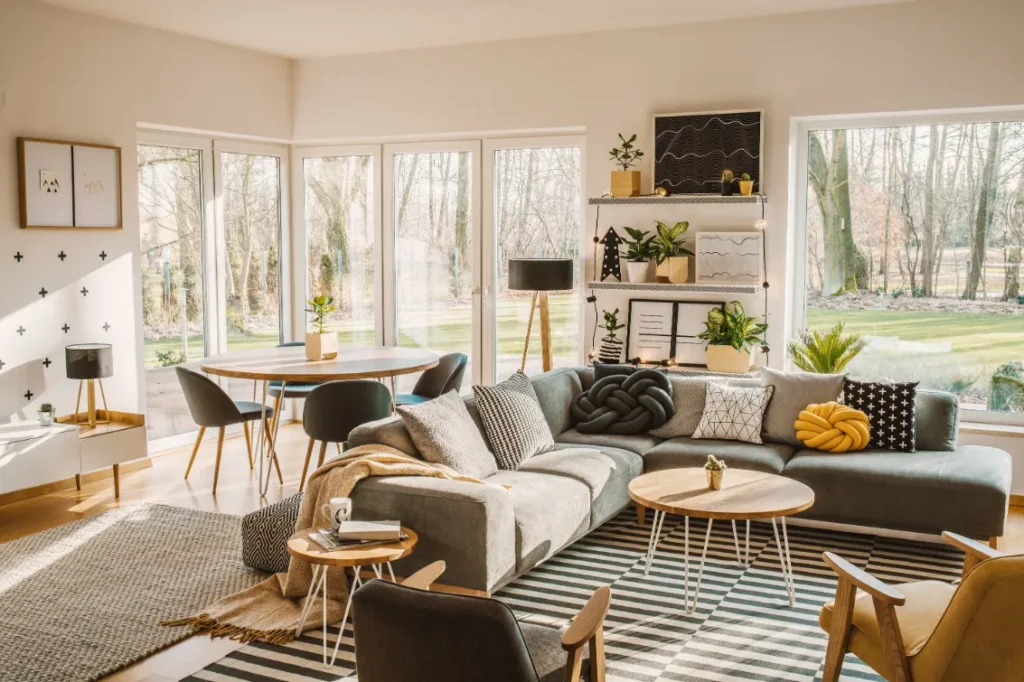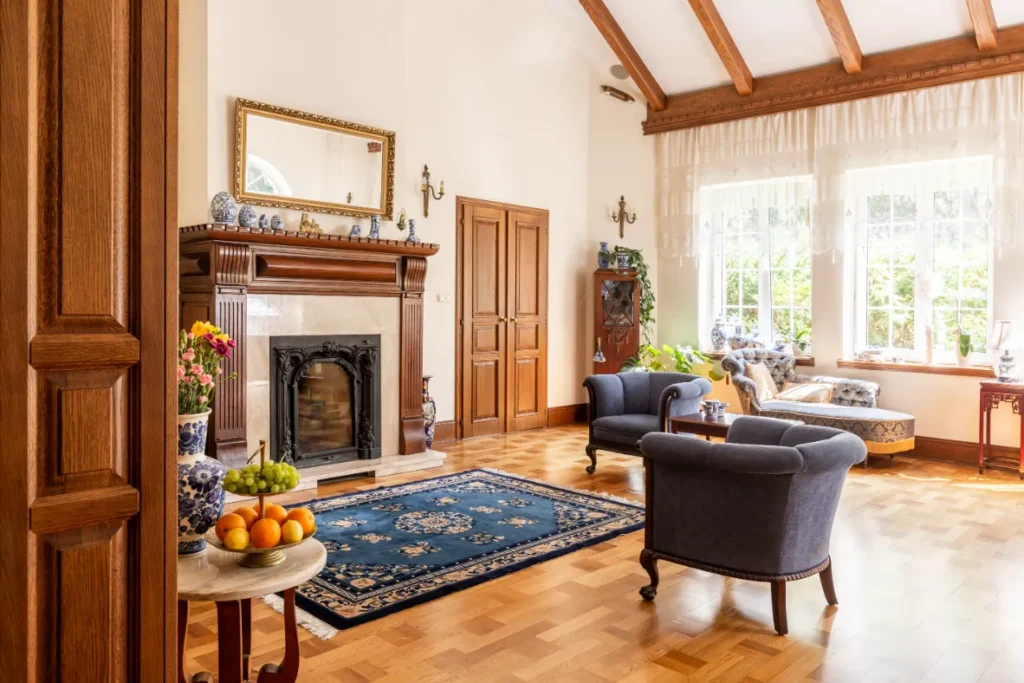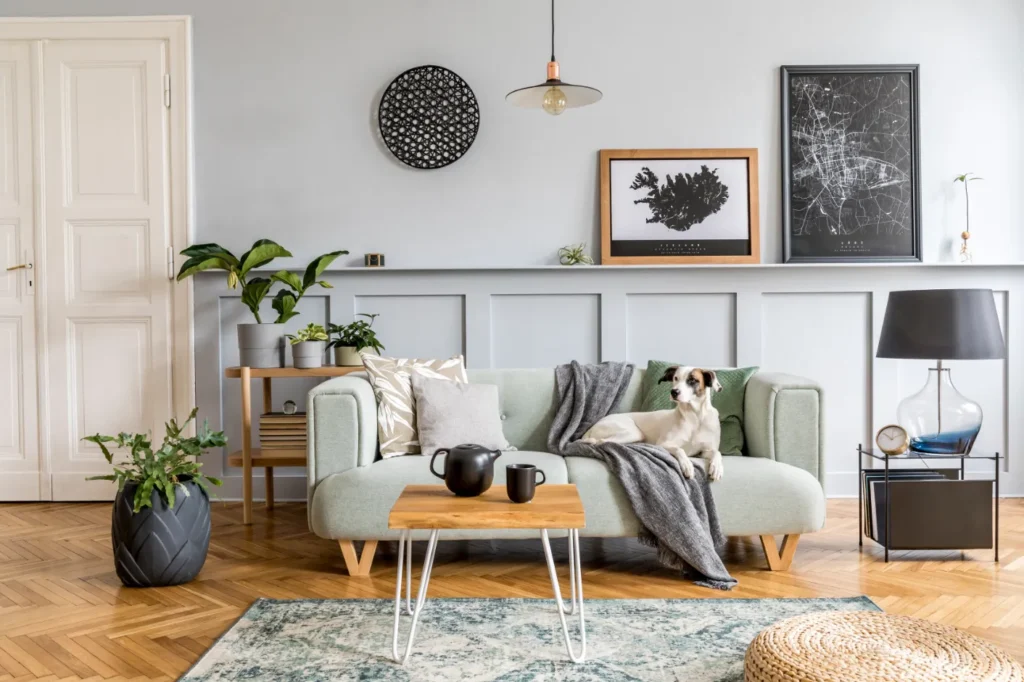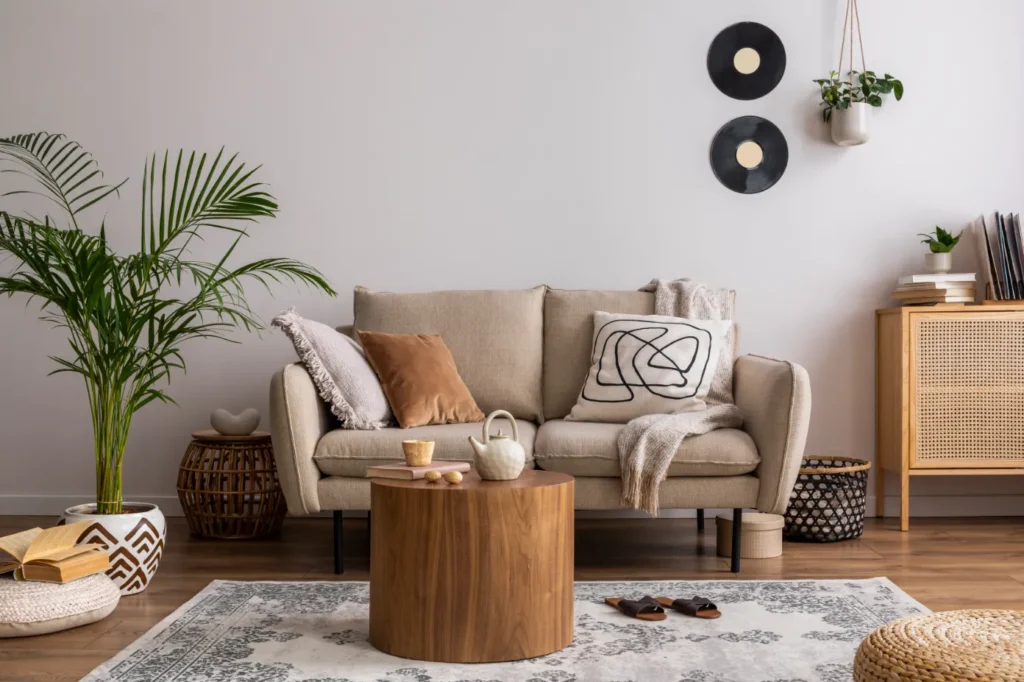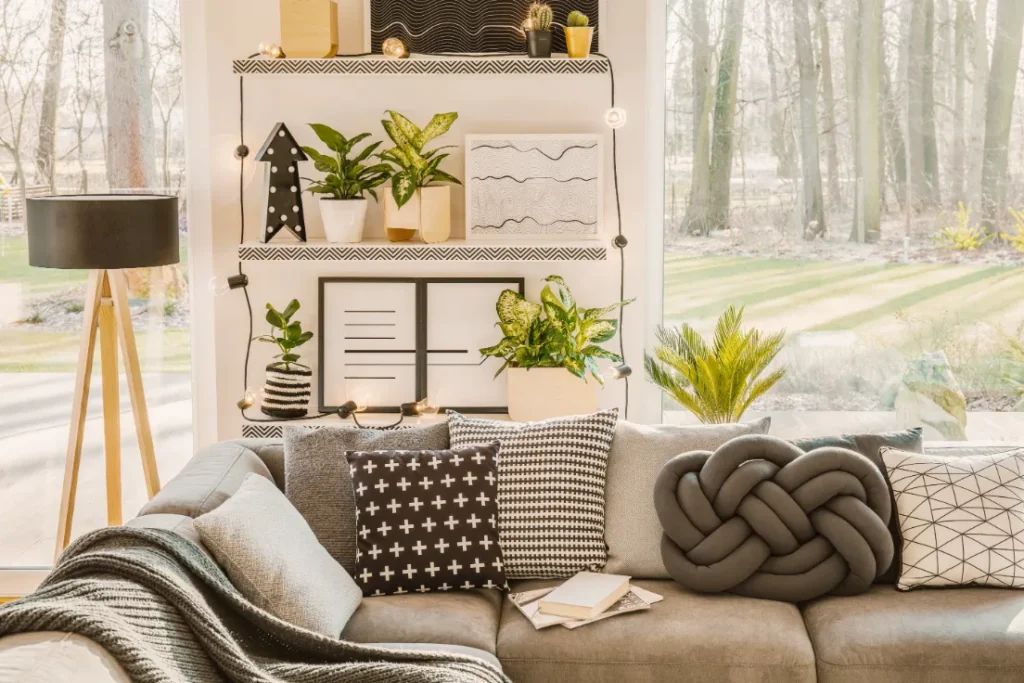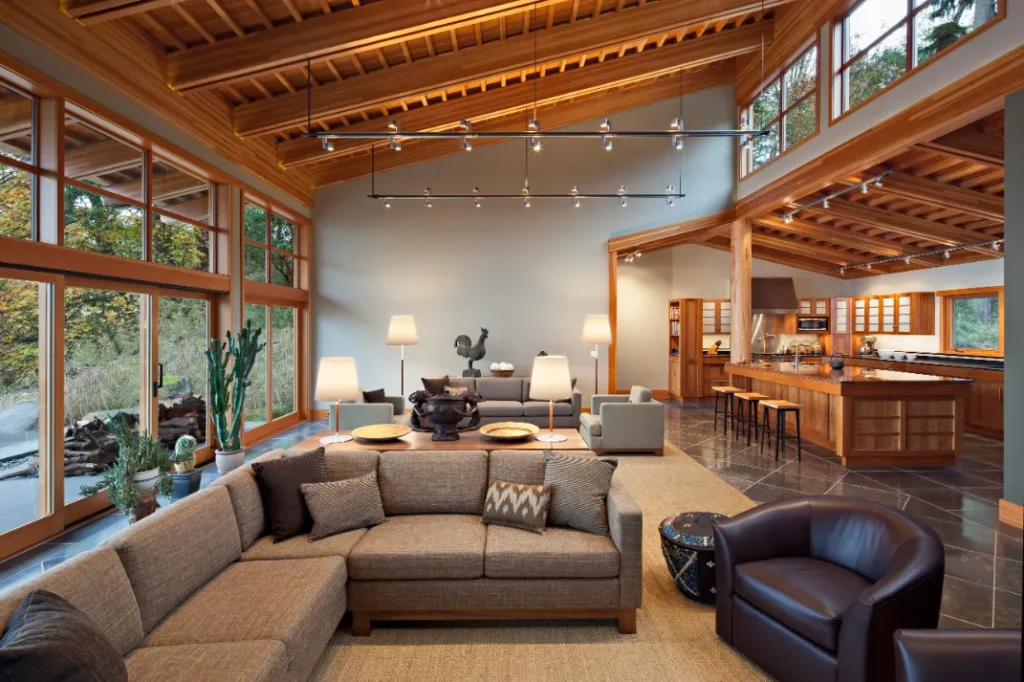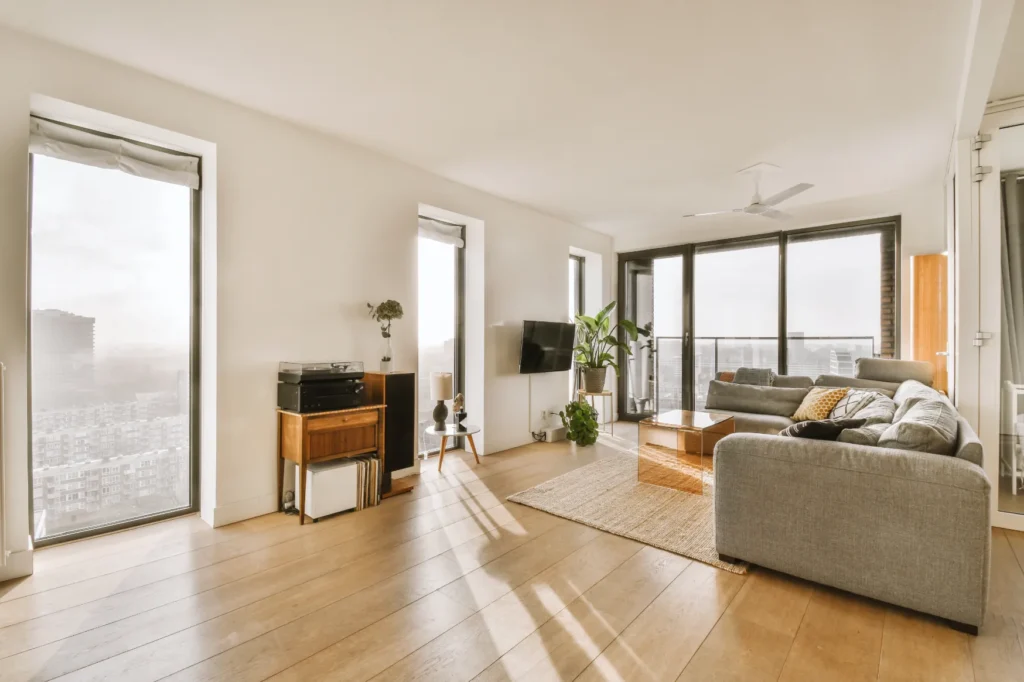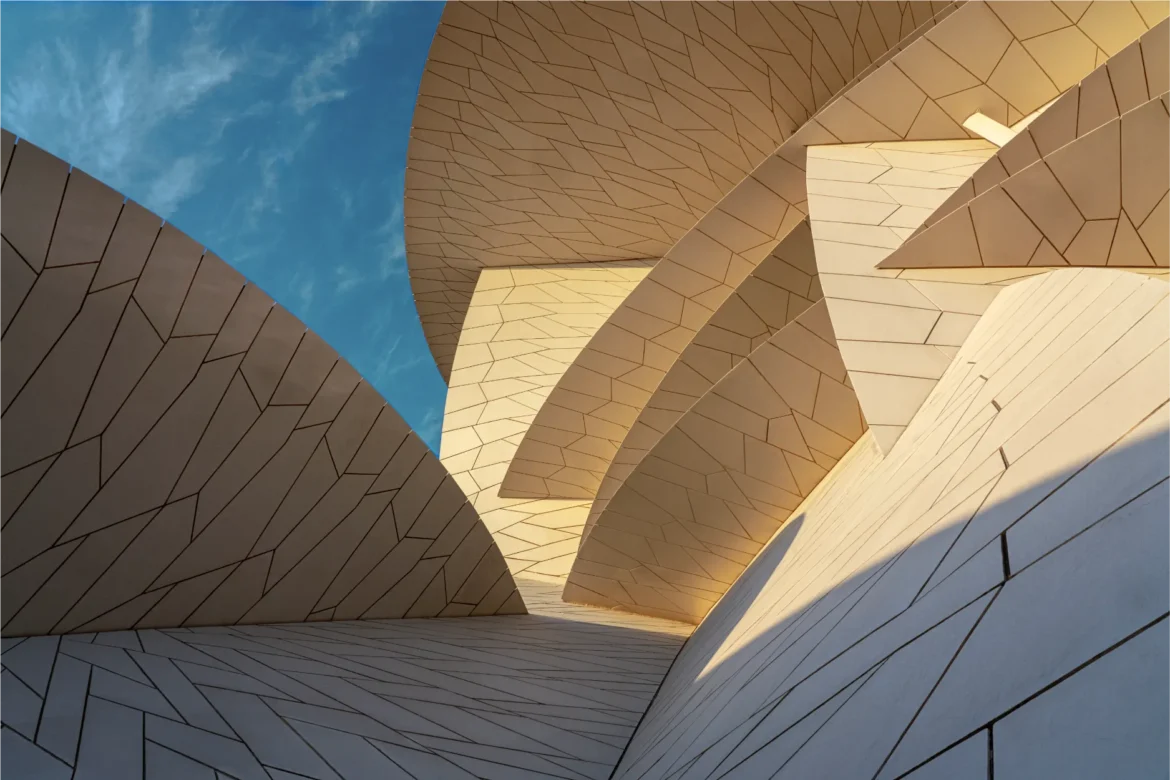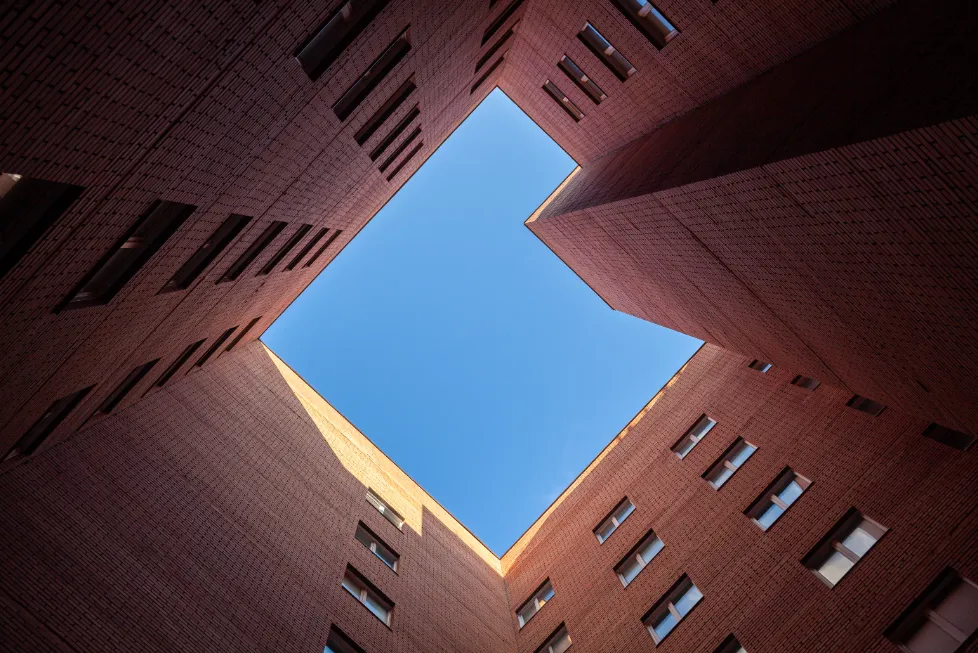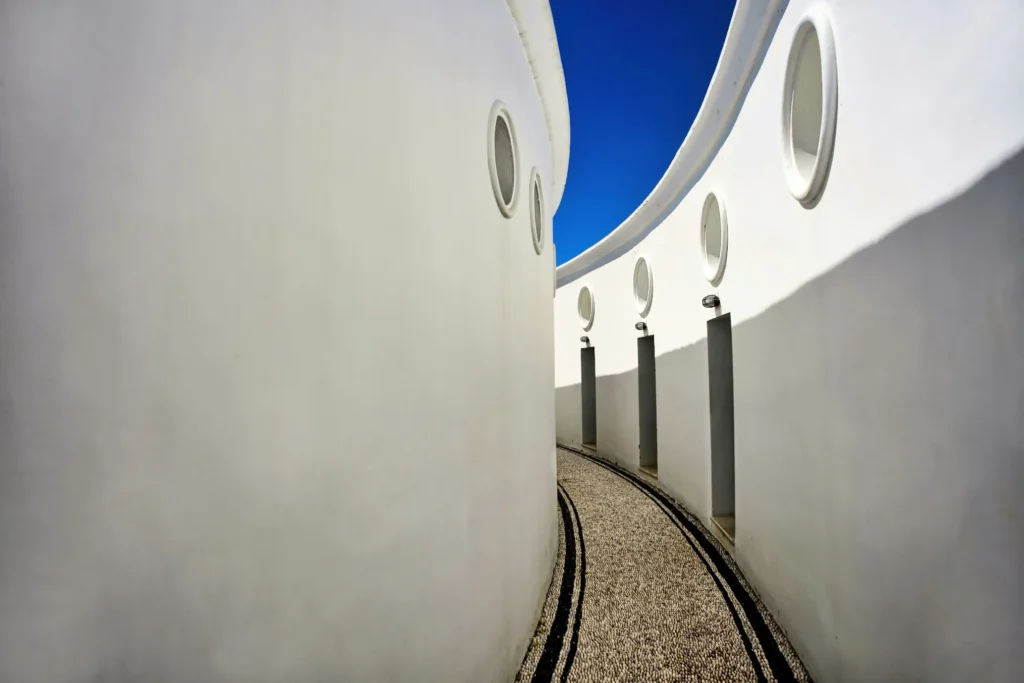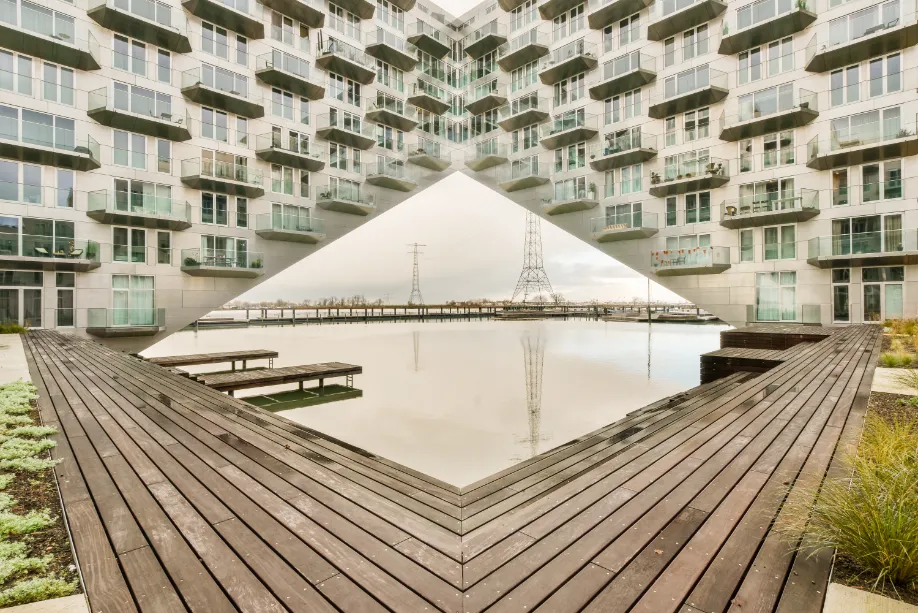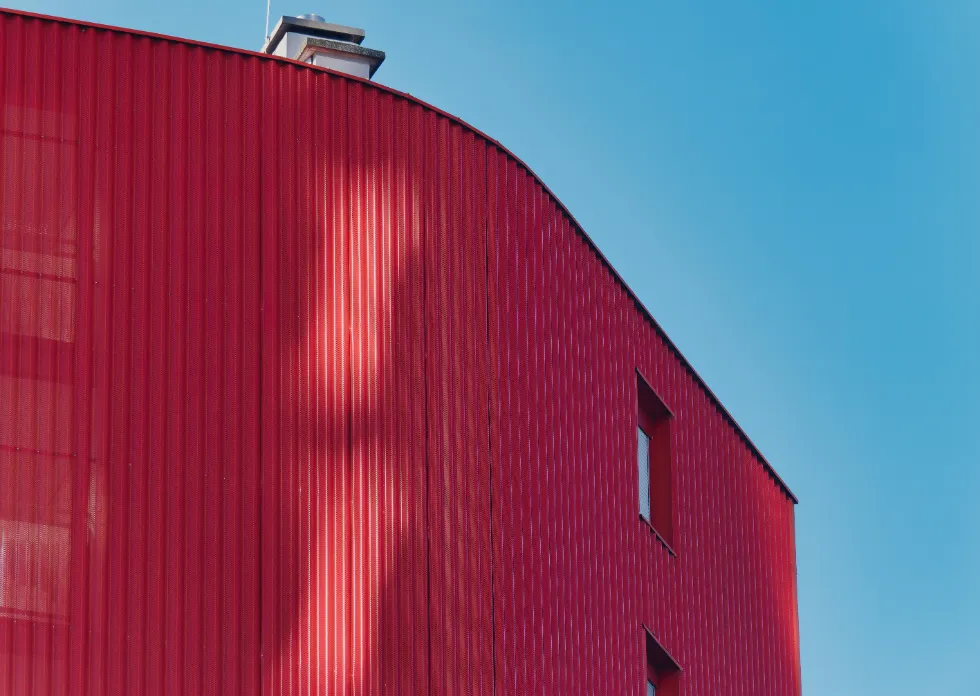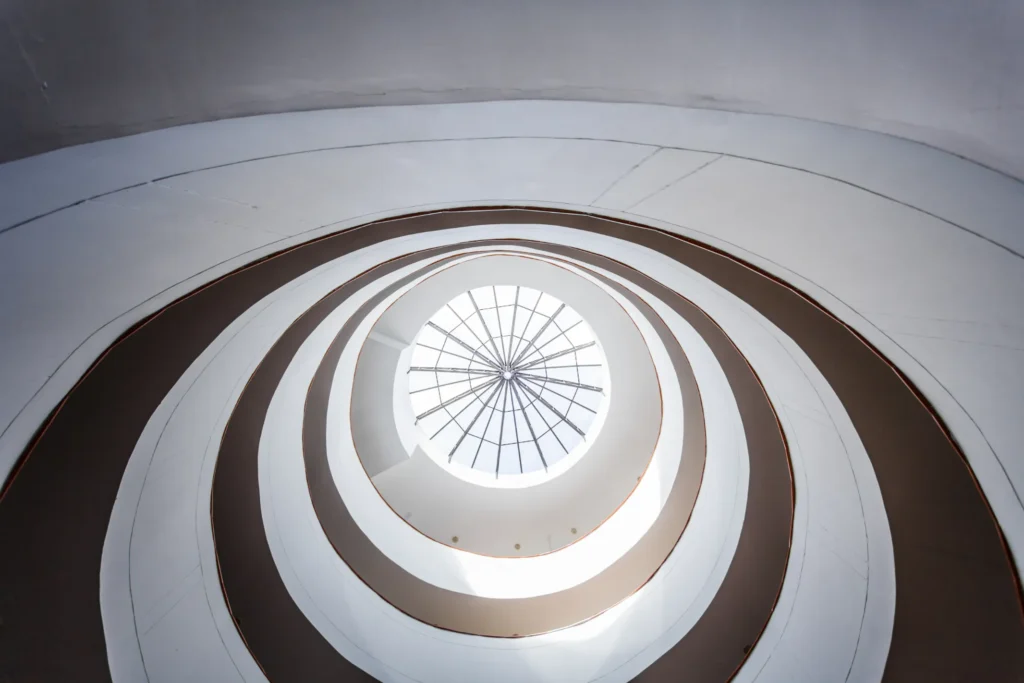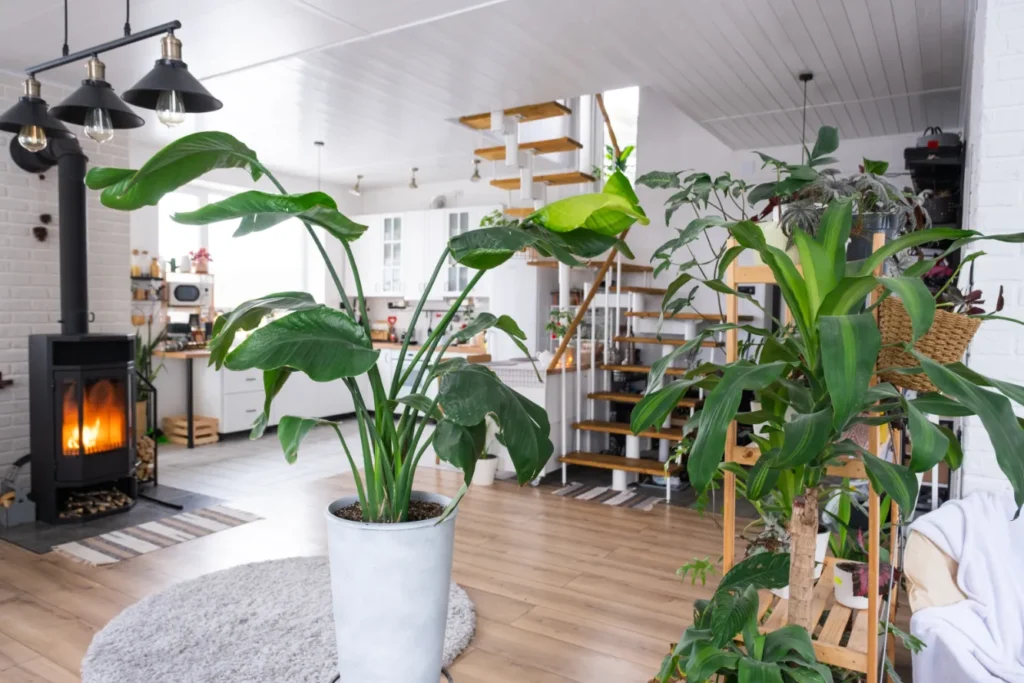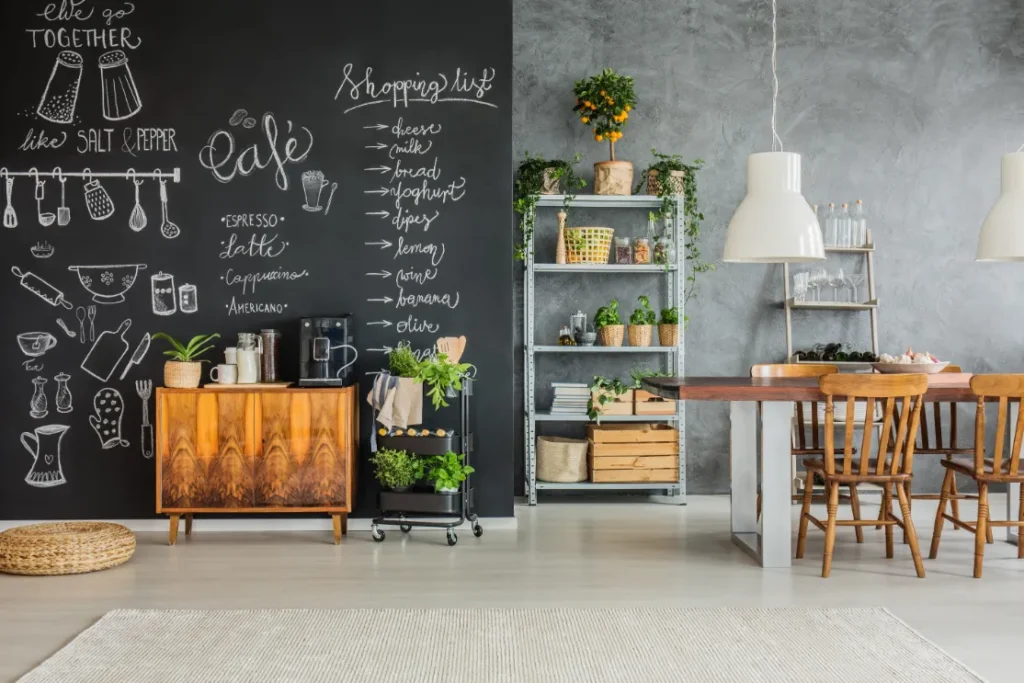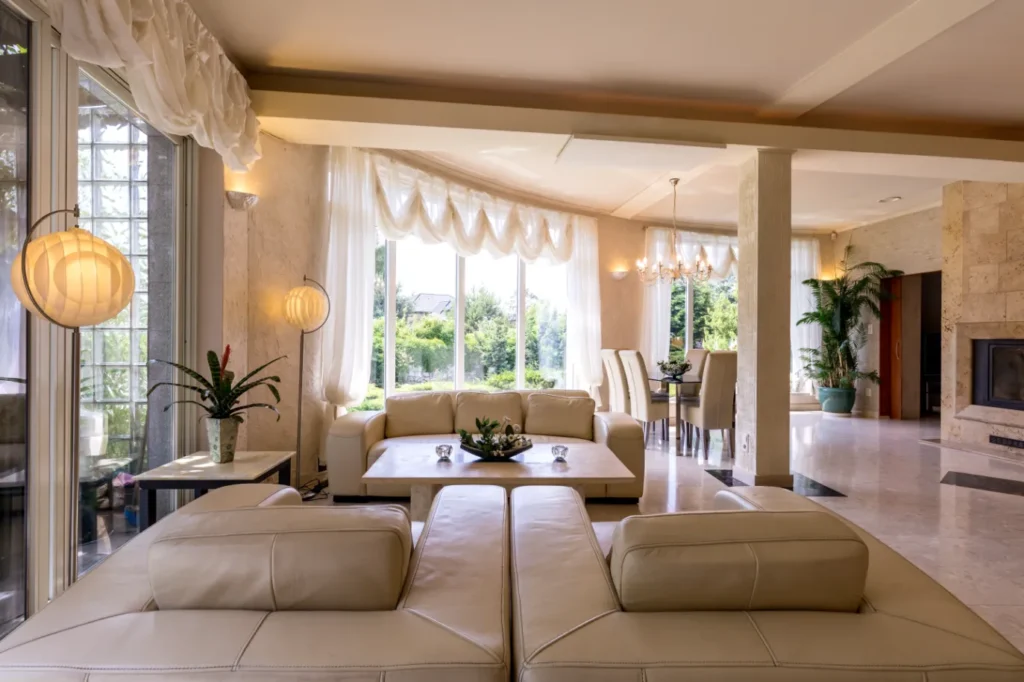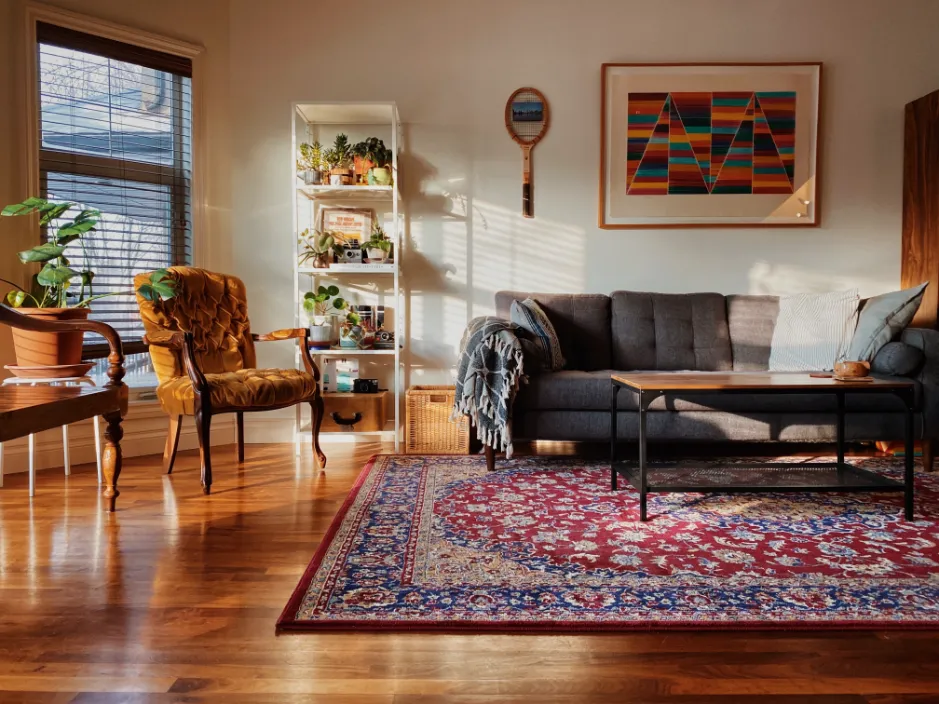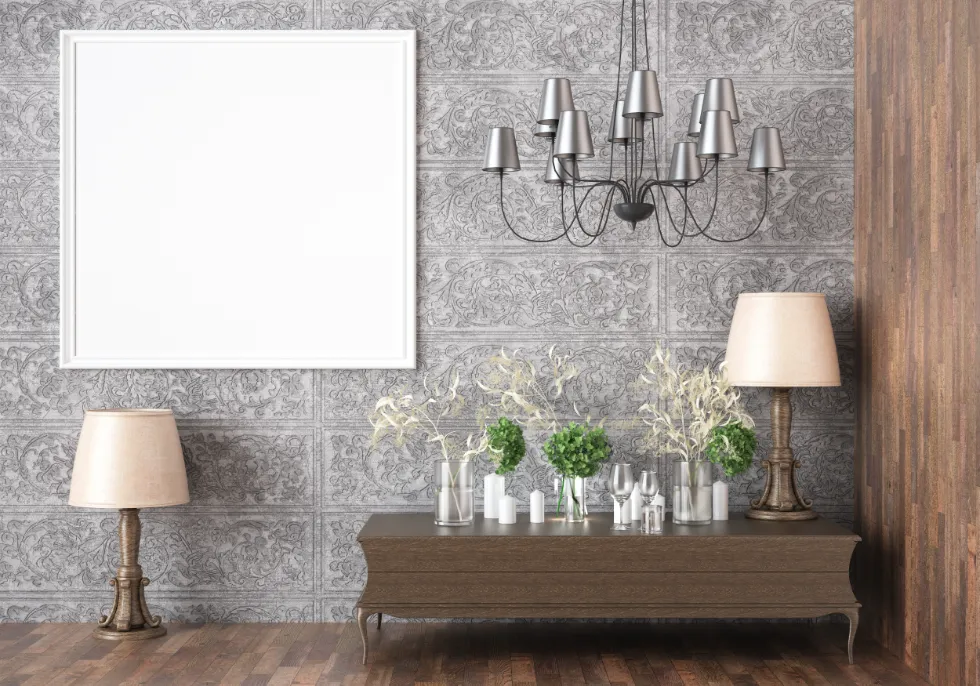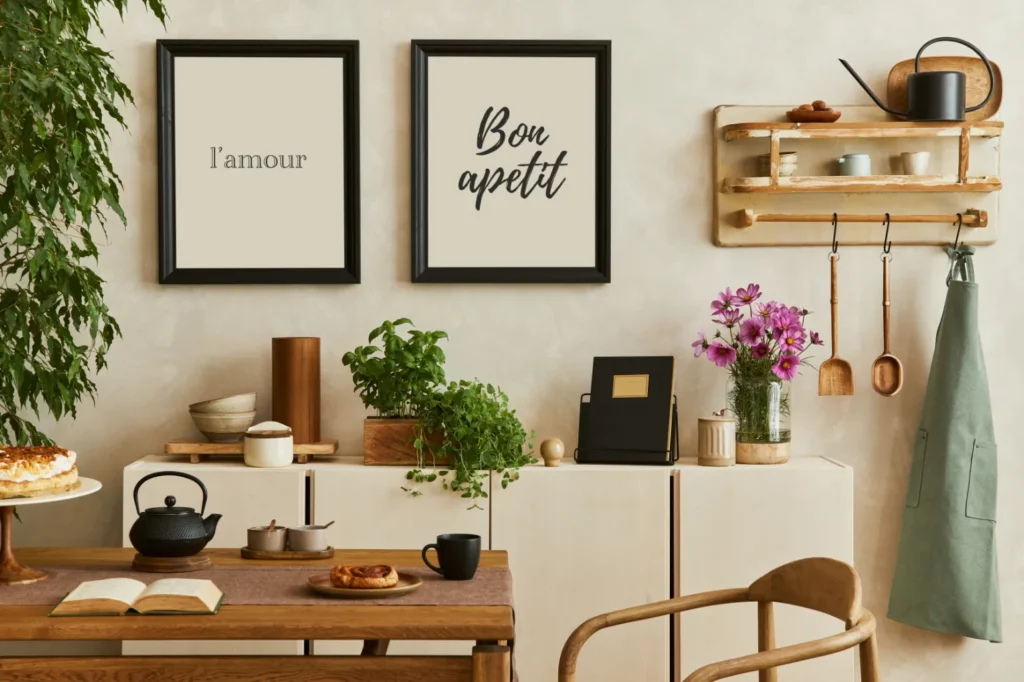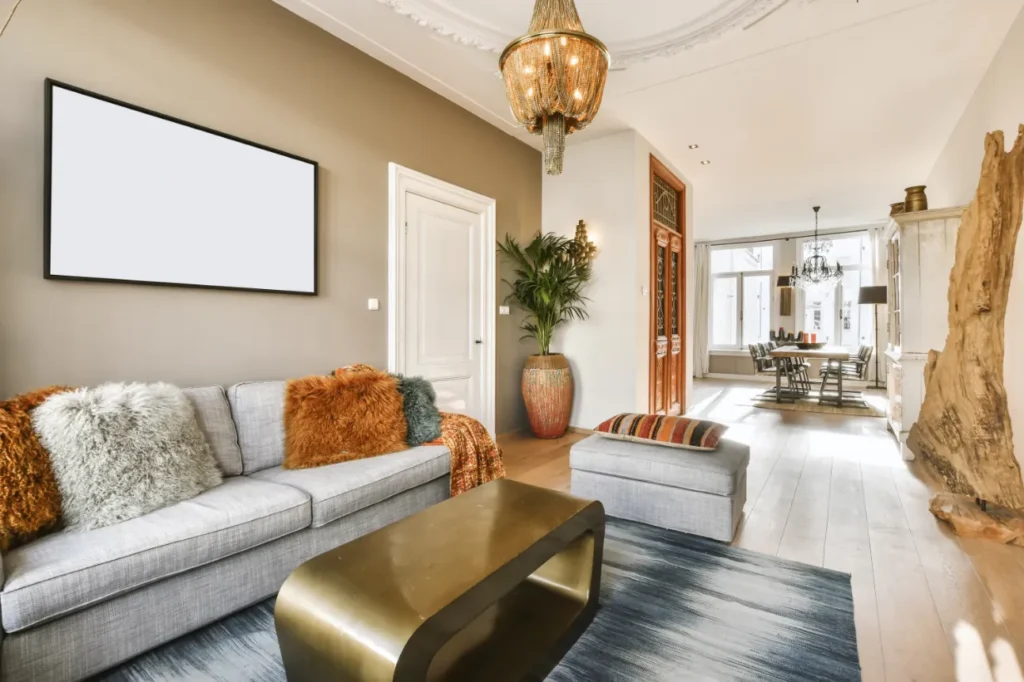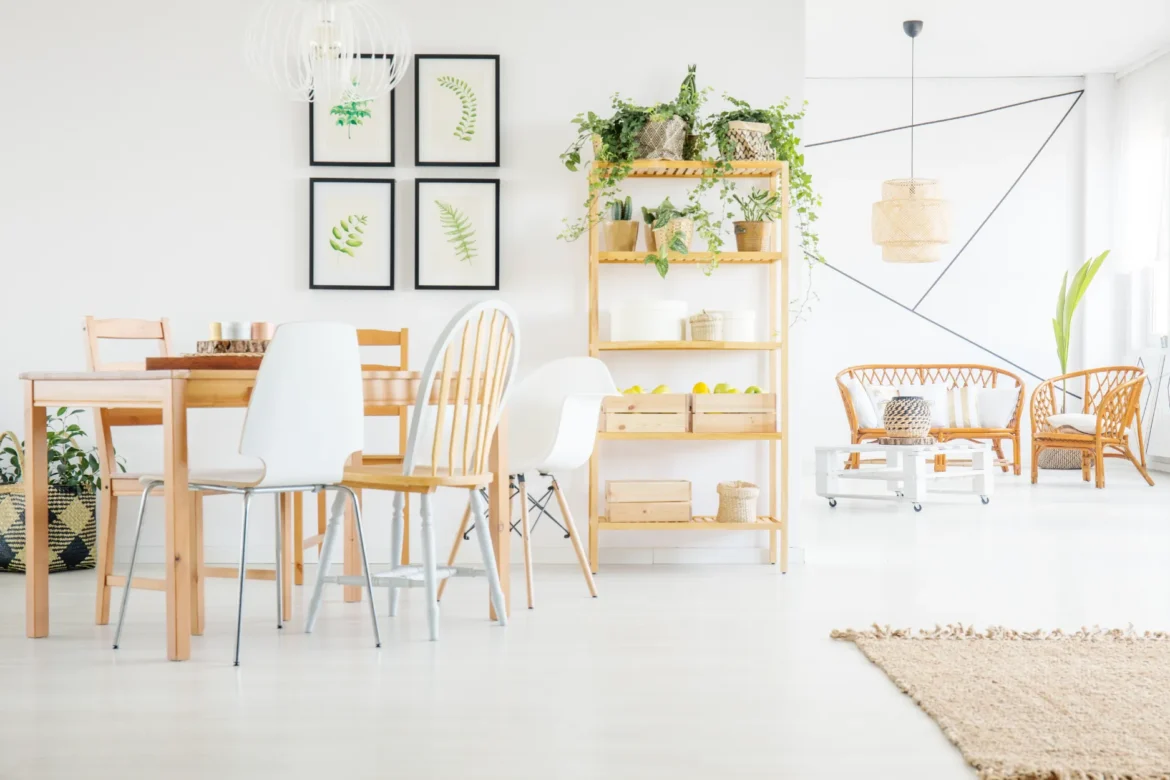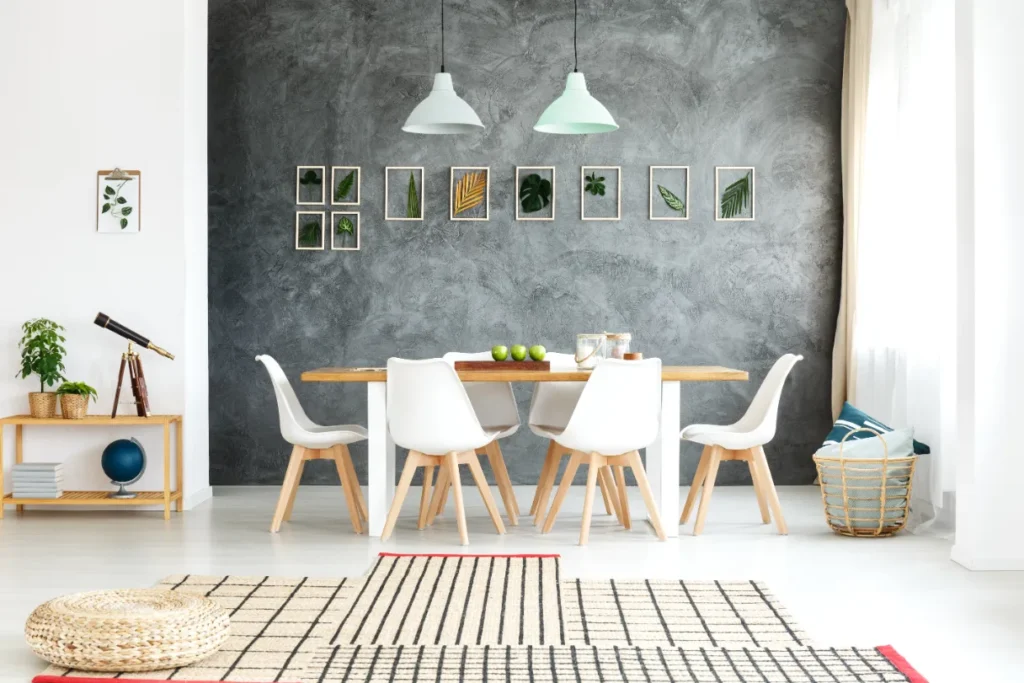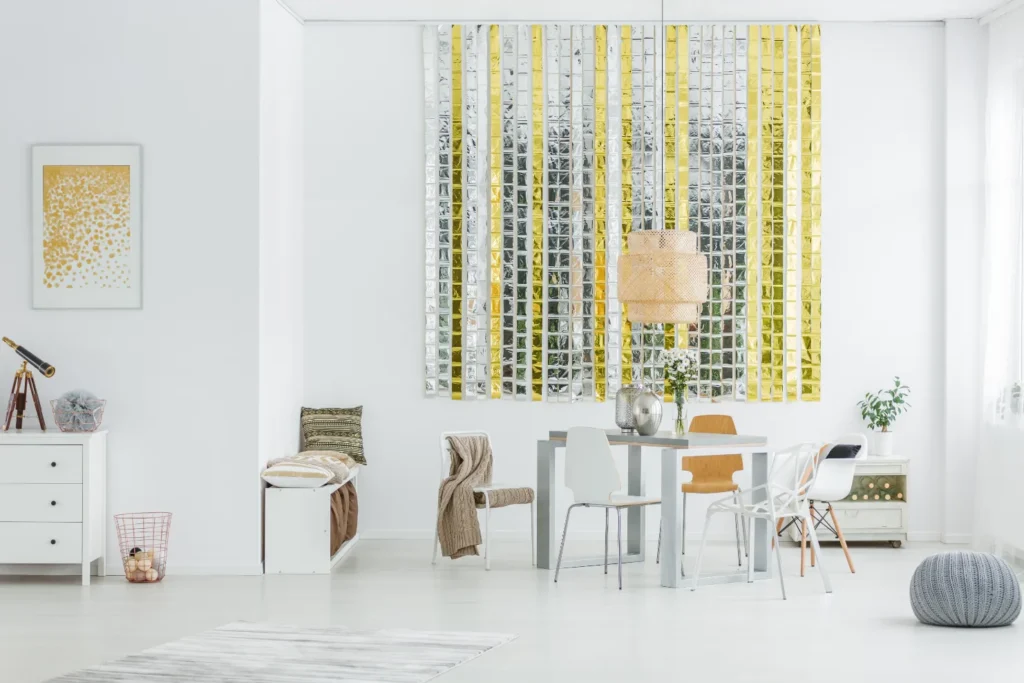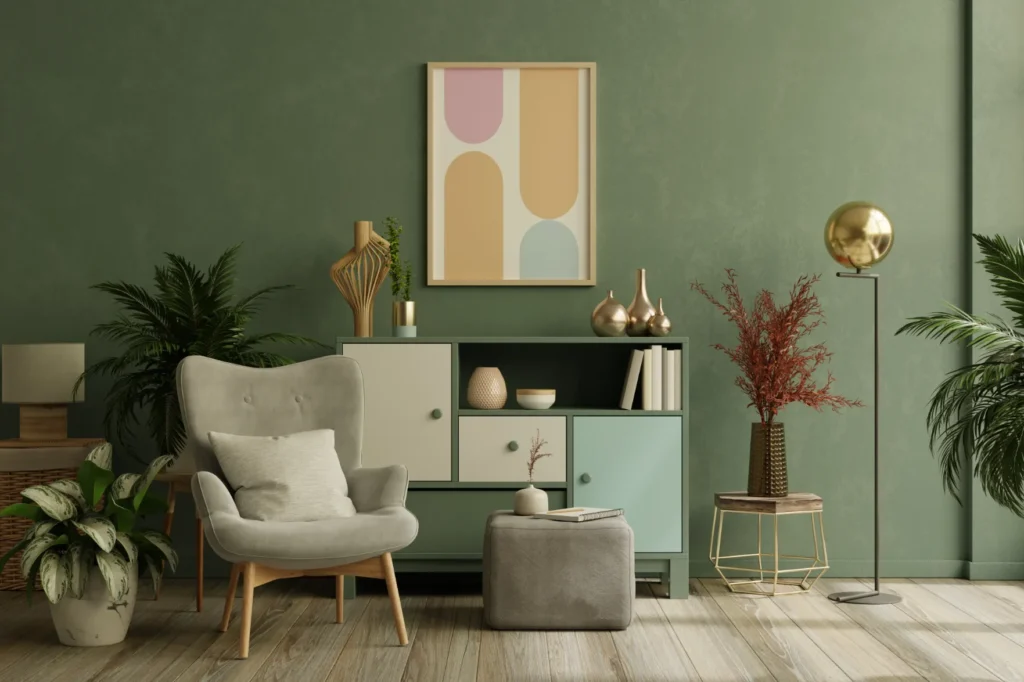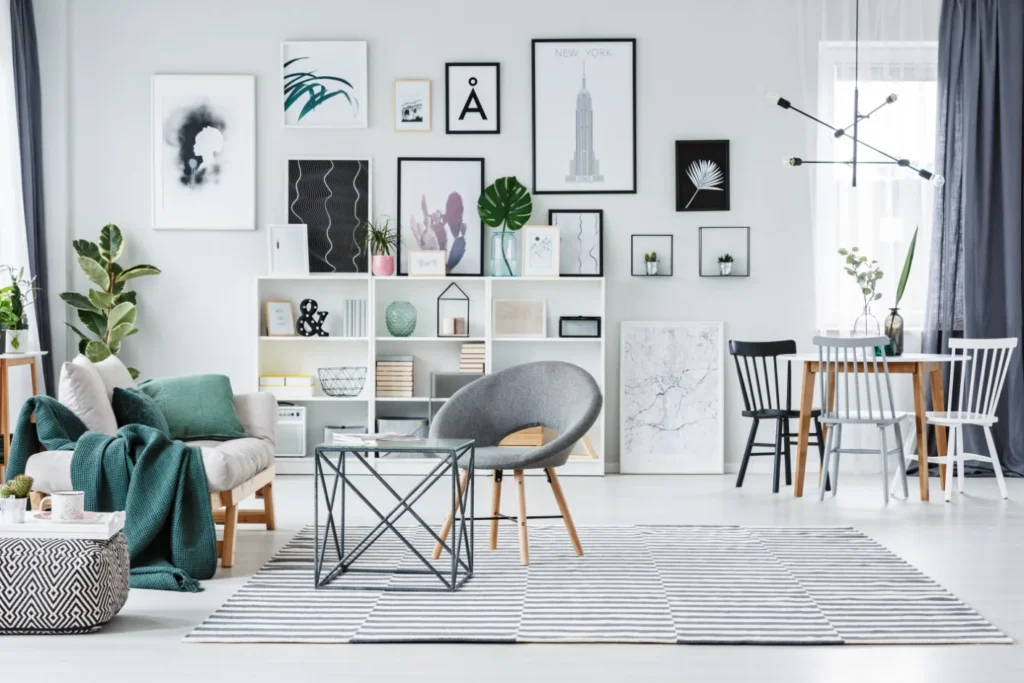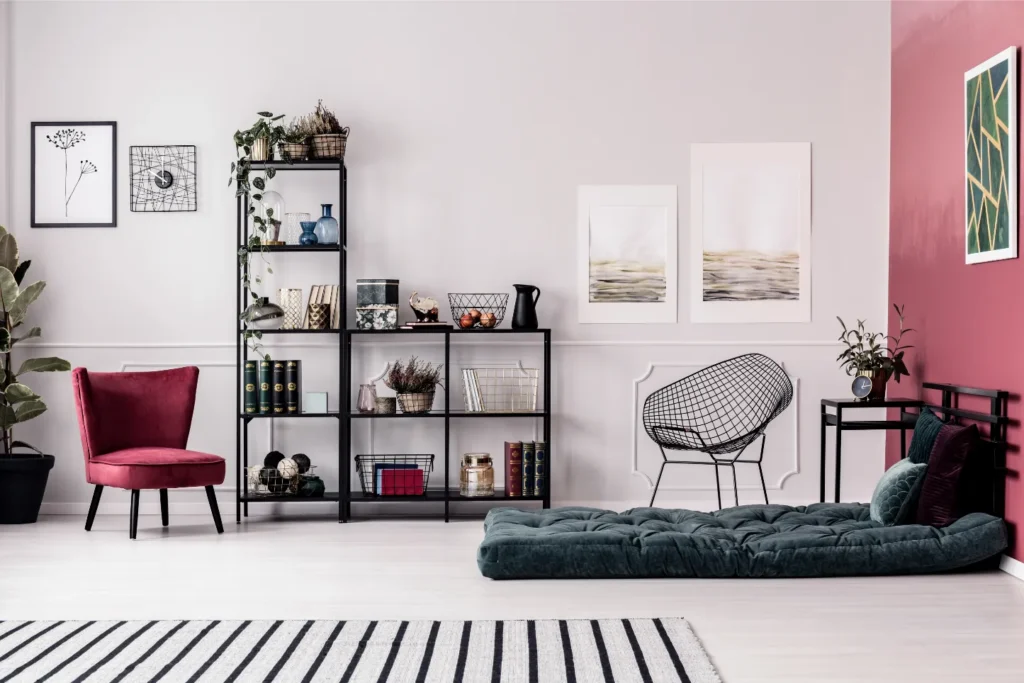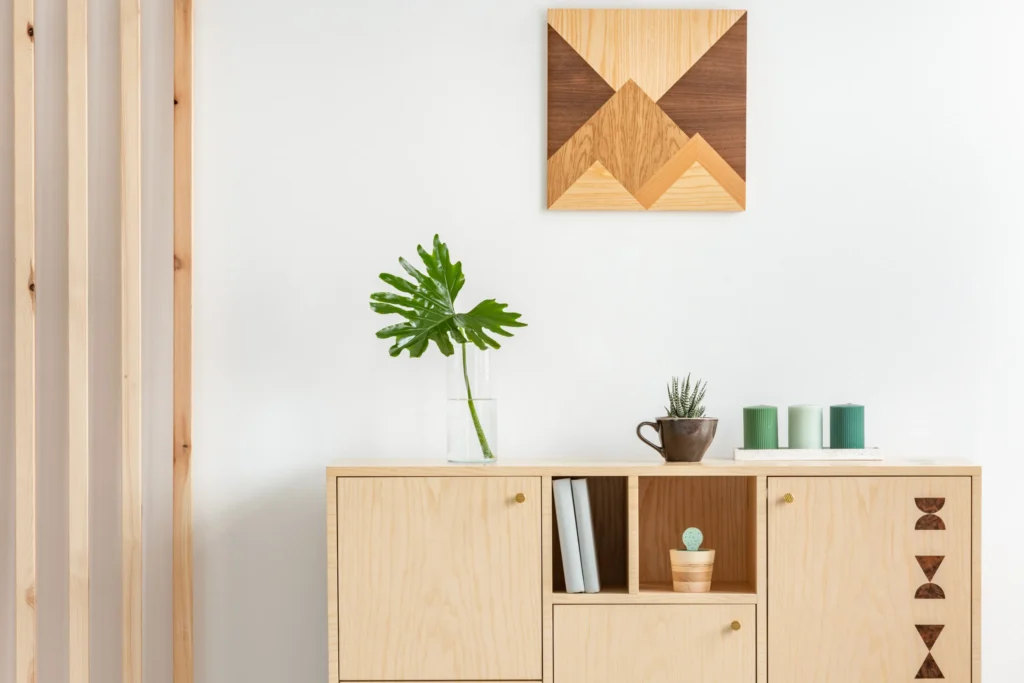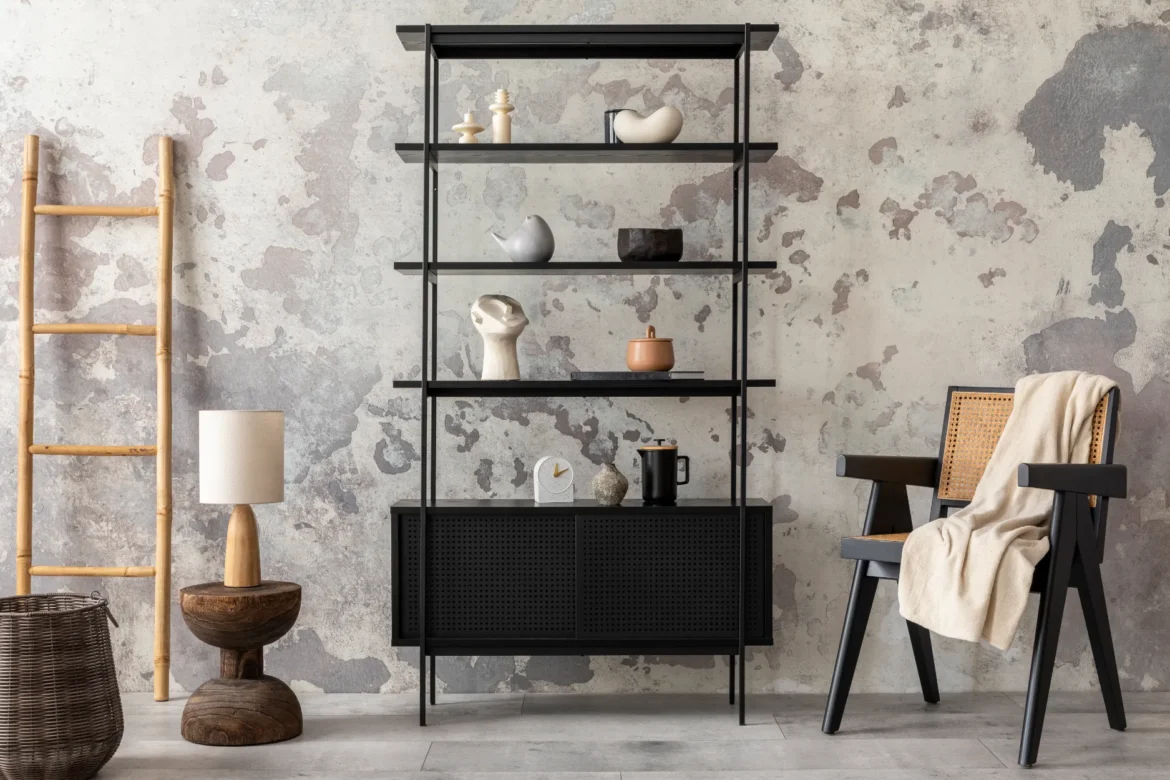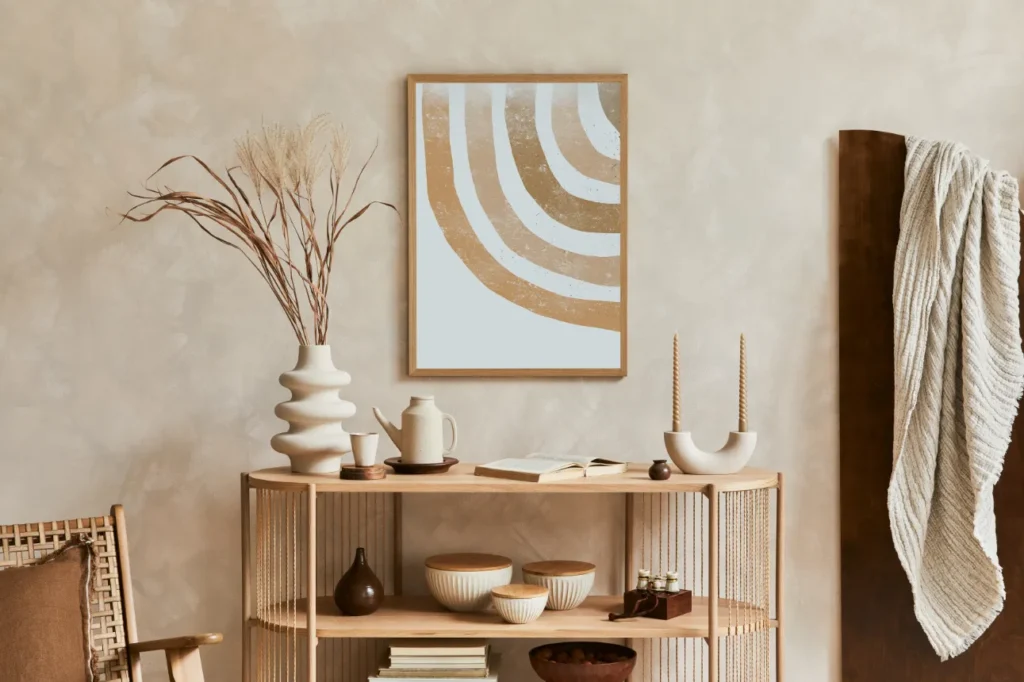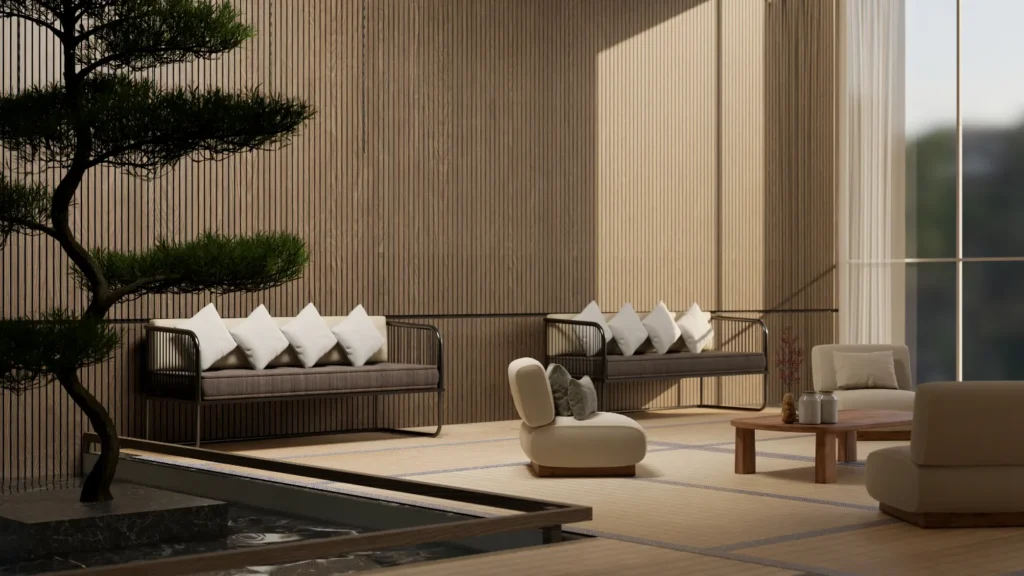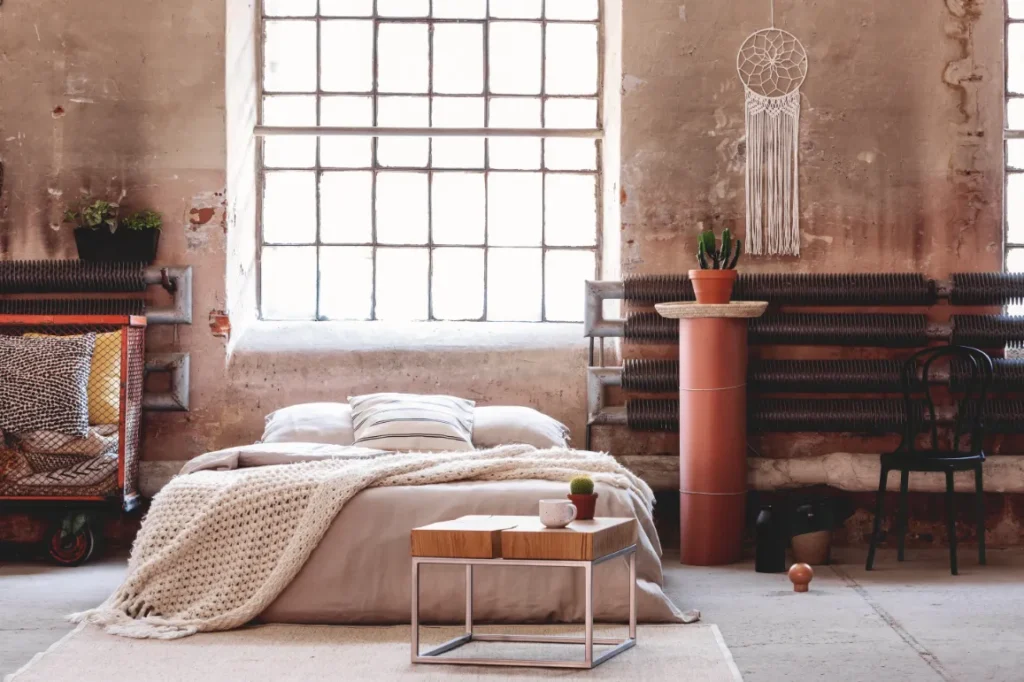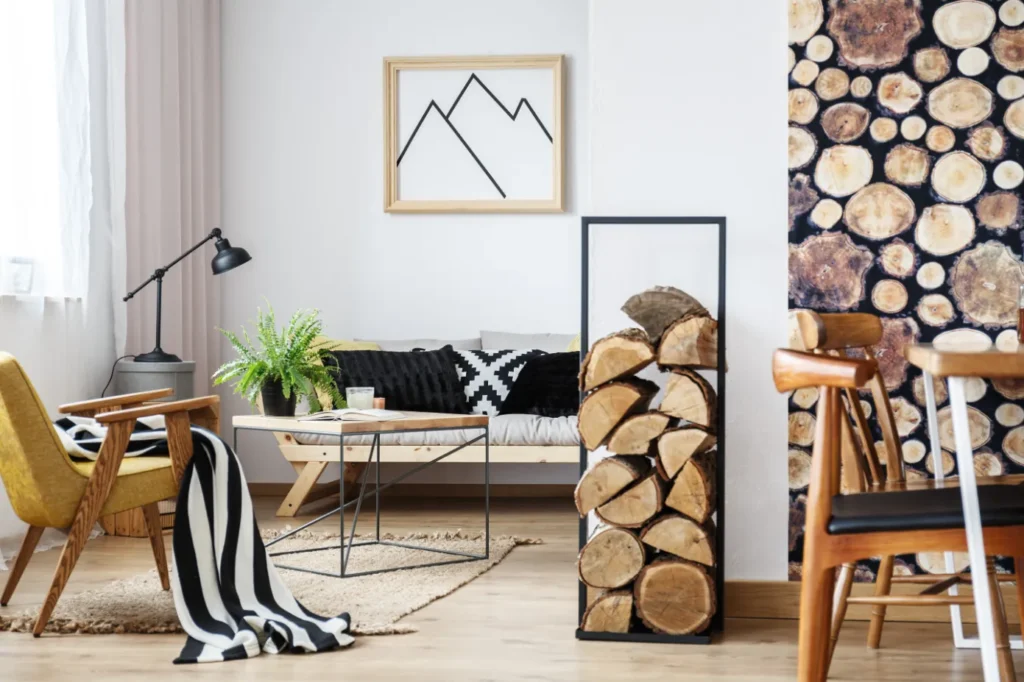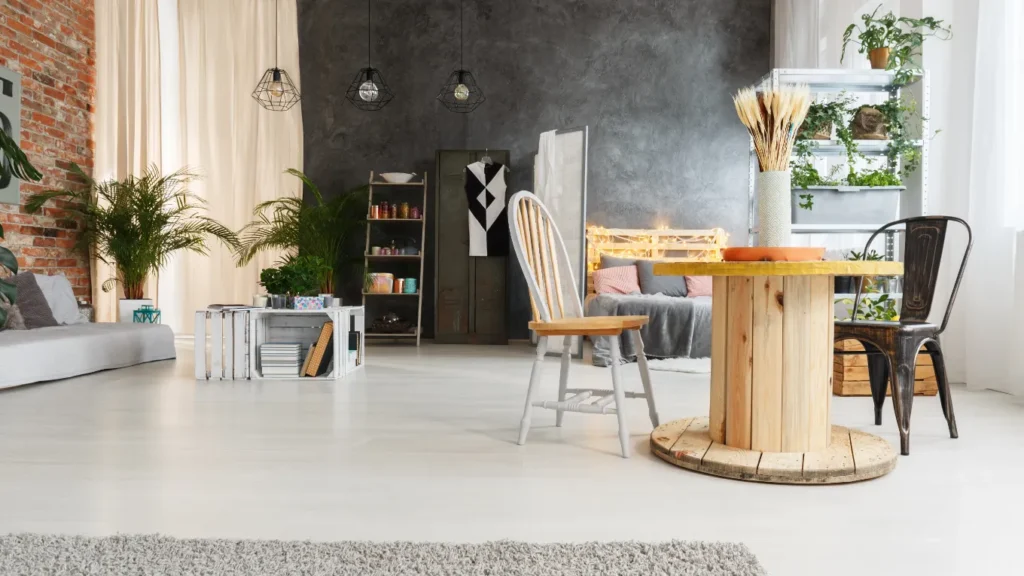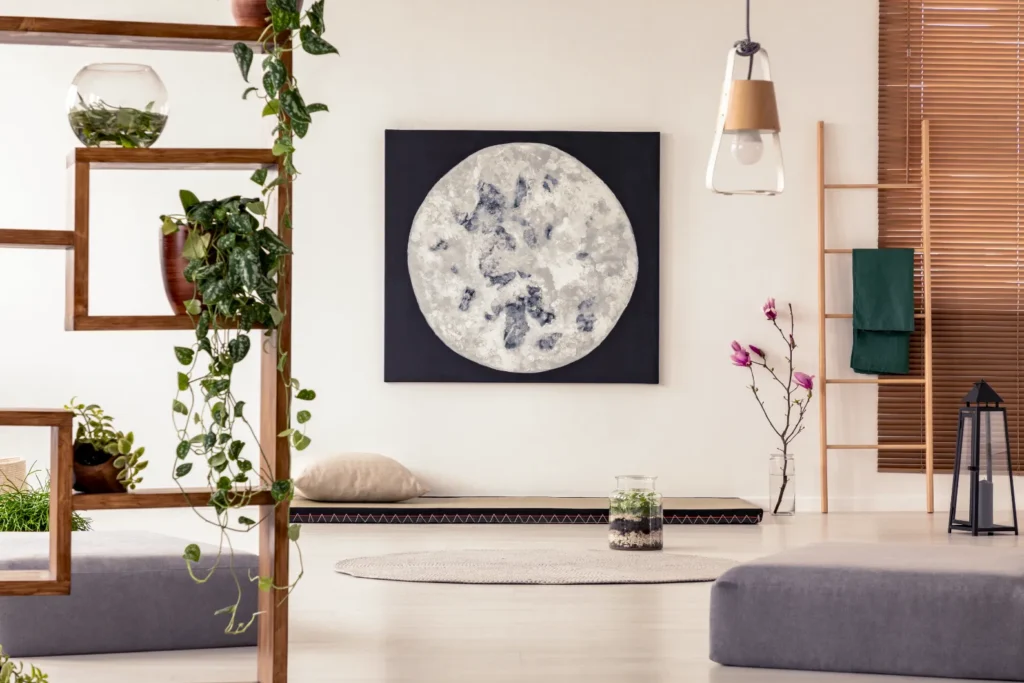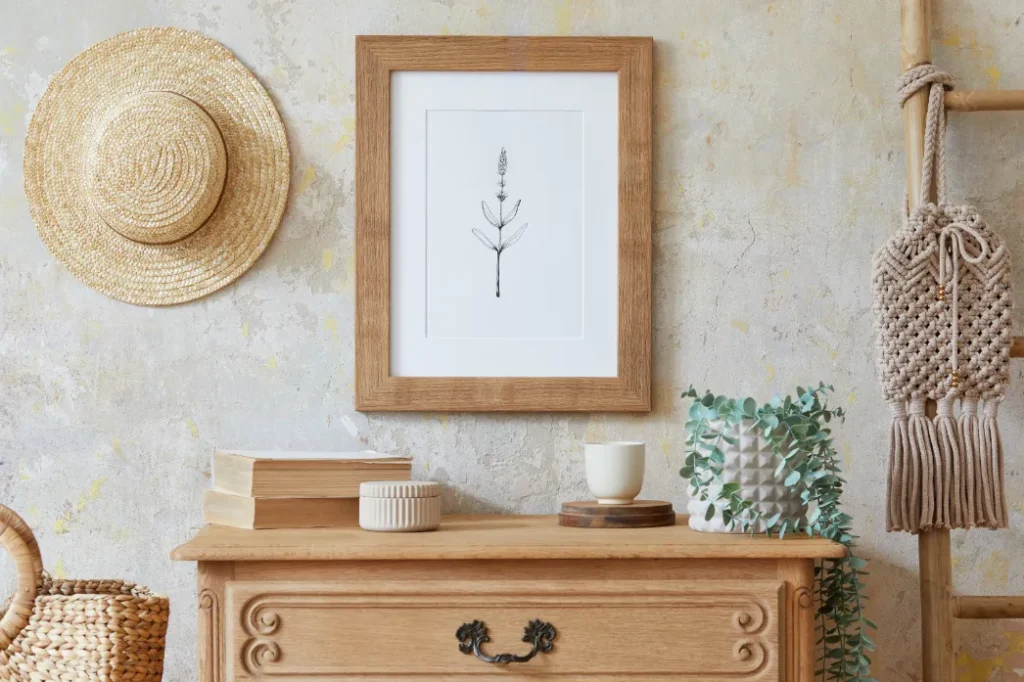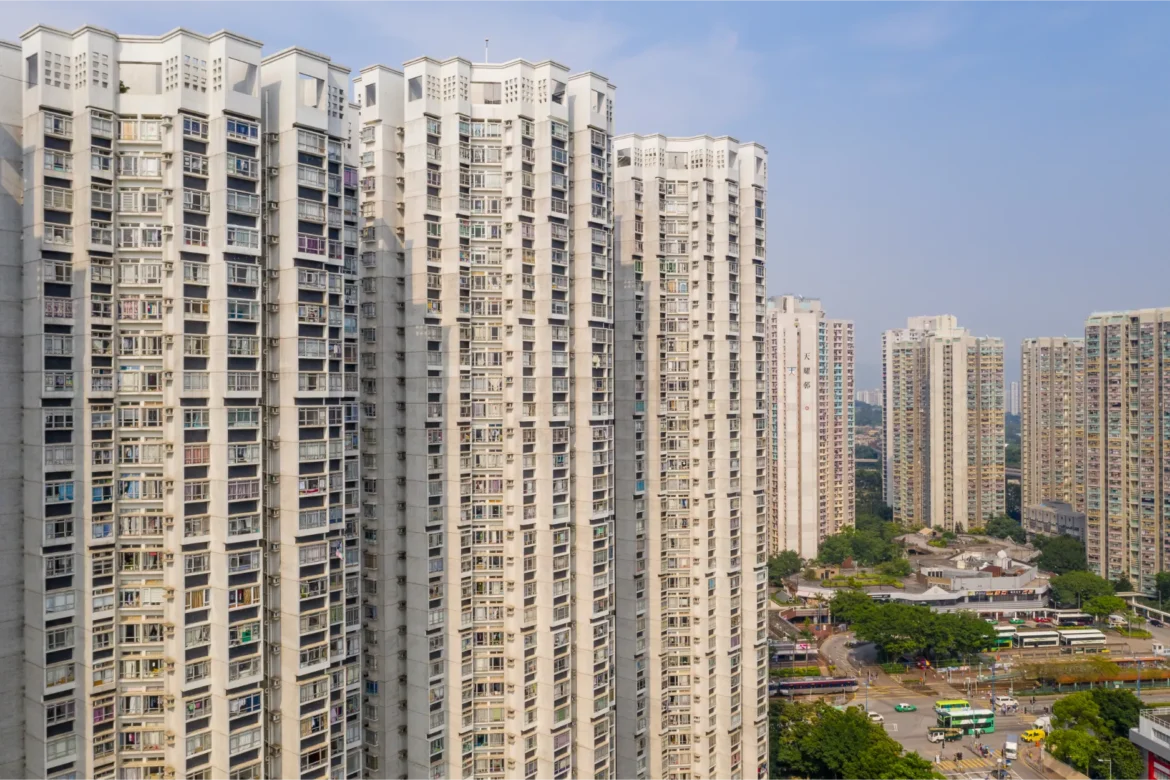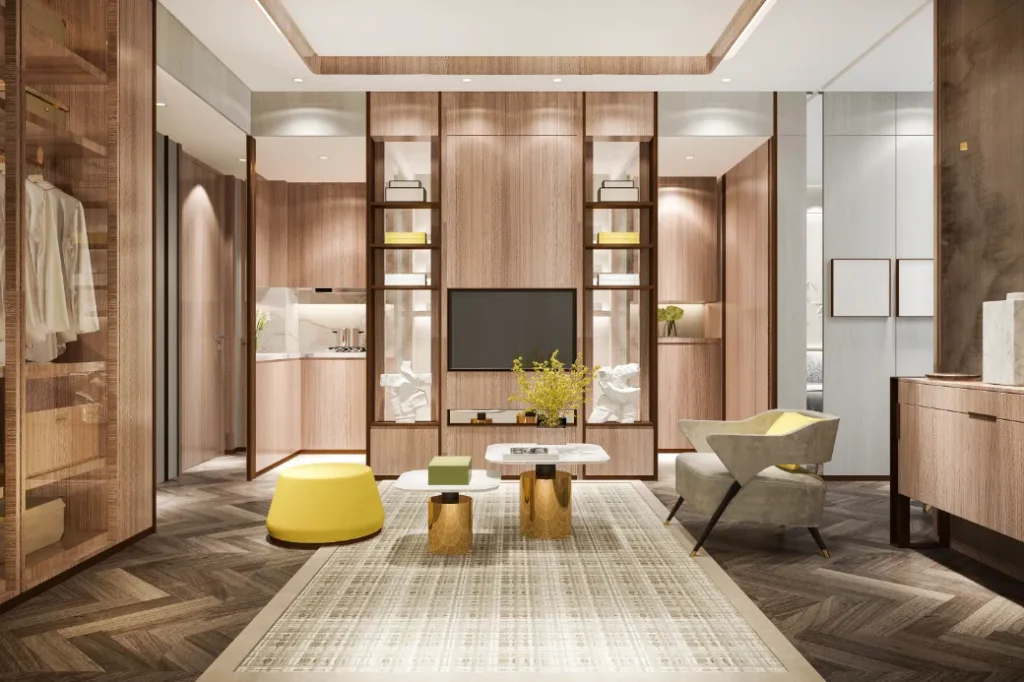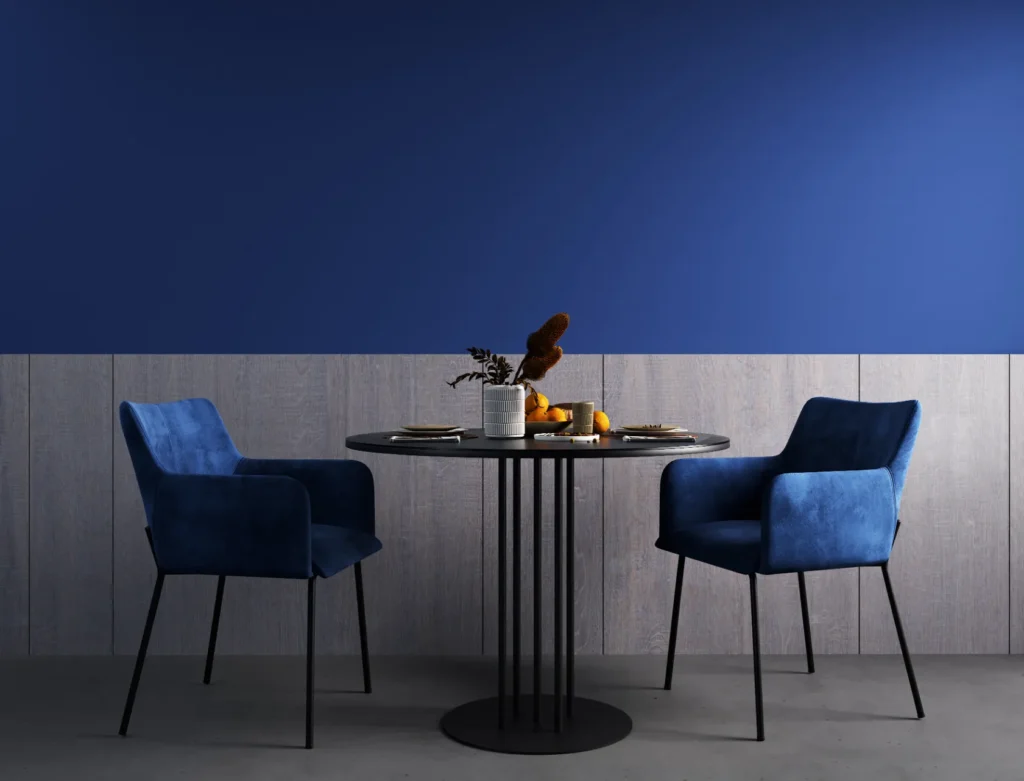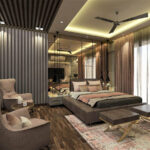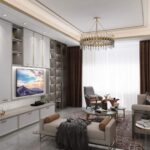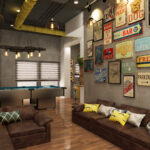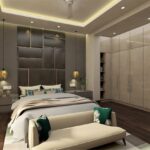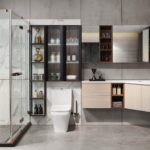Gurgaon’s Best Interior Designers: Why We’re the No.1 Choice
Gurgaon’s Best Interior Designers: Why We’re the No.1 Choice
Table of Contents
Discover The White Frame- the ultimate luxury interior designer in Gurgaon. Tailored solutions that blend elegance and functionality!
Finding the right interior designer can make all the difference for homeowners and professionals in a fast-paced area like Gurgaon and the Delhi-NCR region. With high-end homes, modern apartments, and luxury spaces shaping the landscape, it’s essential to work with someone who understands both style and functionality. Whether you’re creating a new home from scratch or giving your current space a fresh look, choosing the right designer is key to ensuring that your vision comes to life.
The design scene in Gurgaon is bustling, with many firms offering various services. However, not all interior designers can strike the ideal balance between style, function, and personalization. Great design goes beyond how a space looks—it’s about creating a home that feels welcoming and improves how you live. The right designer ensures that every detail is considered, blending creativity with the practical needs of everyday life.
At The White Frame, we’ve earned our reputation as one of the top interior designers in Gurgaon by focusing on custom-made designs that suit the individual needs of our valuable clients. From luxury makeovers to complete home transformations, we’ve become the go-to choice for people looking to elevate their spaces in the Delhi-NCR region.
We focus on every detail, using premium materials with international quality standards along with a design approach that blends luxury with everyday comfort. In this way, your home doesn’t just look beautiful—it feels perfectly suited to your lifestyle. Throughout this blog, we will understand the key factors that homeowners should consider when selecting an interior designer.
Also Read- 5 Impressive Interior Design Trends in Delhi-NCR Worth Noticing in 2024
Portfolio: Reflecting Experience and Expertise of an Interior Designer
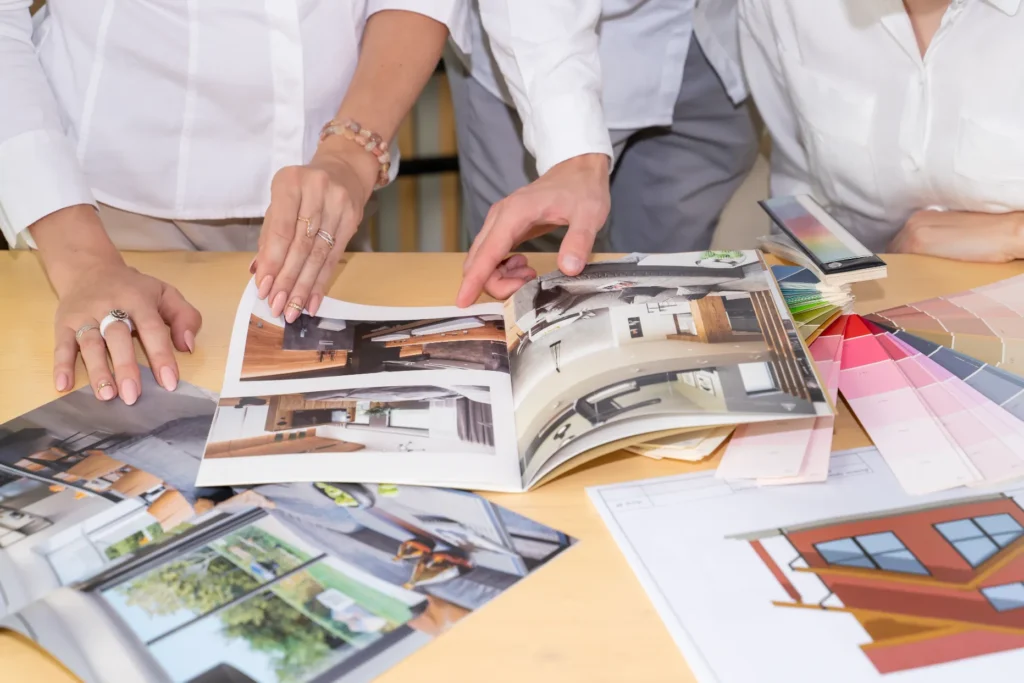
When selecting an interior designer, a strong portfolio is a key sign of their experience and skills. A good portfolio showcases a variety of styles, from modern and classical to luxury and minimalist designs. This variety reflects the designer’s creativity and adaptability—qualities that are essential when finding the right fit for your project.
For homeowners in Gurgaon, it’s important to choose a designer with experience in different types of projects, whether residential, commercial, or turnkey. Each project has its own unique challenges, and a solid portfolio demonstrates how well the designer can handle these diverse needs. Whether it’s redesigning a luxurious villa or creating a sleek office environment, the range of an interior designer’s work can reveal their ability to turn any idea into reality.
Additionally, successful interior design isn’t just about looks; it’s also about practicality. The leading interior designers in Gurgaon understand that a well-designed interior must serve its purpose while also creating a visually appealing atmosphere. This balance is crucial, as spaces should enhance daily living, whether it’s a cozy home, a bustling office, or a welcoming retail environment.
A portfolio that balances both aesthetics and functionality shows that the designer understands how to make a space livable and efficient.
Design Sensibility: Balancing Aesthetics with Functionality

When selecting an interior designer, it’s essential to find someone who can balance aesthetics with functionality. While a beautiful space is important, it’s equally critical that the design works in everyday life. This is where the skill of blending luxury with practicality becomes invaluable.
The best designers know how to shape spaces that are as practical as they are visually stunning. Take a high-end office in South Delhi, where striking contemporary décor sets a professional tone, but the space is also carefully planned to foster productivity and teamwork. By aligning design with the way the space will actually be used, these designers create interiors that truly work for the client.
For homeowners and businesses in Gurgaon, capturing and translating a client’s vision into reality is key. Whether the desired style is modern, contemporary, or traditional, a skilled interior designer listens carefully to understand the client’s preferences. From sleek, minimalist designs to more ornate, luxurious interiors, it’s about bringing the client’s ideas to life while ensuring the space is practical and easy to use.
Consistency is another hallmark of a good interior designer. It’s important that the designer not only grasps the client’s design sensibilities but also delivers on them throughout the project. Whether designing a home, office, or commercial space, the best interior designers in Gurgaon create environments that reflect the client’s personality, lifestyle, and needs. This balance of form and function ensures that each project is tailored to both the aesthetic desires and the client’s practical requirements.
Client Service: Understanding and Personalization
The level of client service is just as important as design expertise. A great interior designer takes the time to fully understand your lifestyle, personal preferences, and practical needs. Whether you’re designing a home or office, your designer should be able to tailor their approach to fit your unique vision. This personalized touch ensures that the final space reflects your style and functions seamlessly with your day-to-day life.
From the initial concept to the final execution, the best interior designers provide a step-by-step plan that outlines everything. This helps you know what to expect, from the design stages to material selection and timeline management. Transparency in pricing and project milestones ensures that there are no surprises along the way, giving you peace of mind throughout the process.
Effective communication is another crucial factor. A good interior designer doesn’t just present ideas; they collaborate with you at every stage. Continuous communication and updates keep you informed and involved in the project. Whether it’s choosing the right finishes or adjusting design details to better suit your needs, staying in touch ensures that the final result meets your expectations. Support doesn’t end with the design phase—good designers are there to guide you until the project is fully completed.
Read more here- Virtual Interior Design Consultations: Top 3 Essential Elements
Material Quality: The Heart of Premium Interior Design
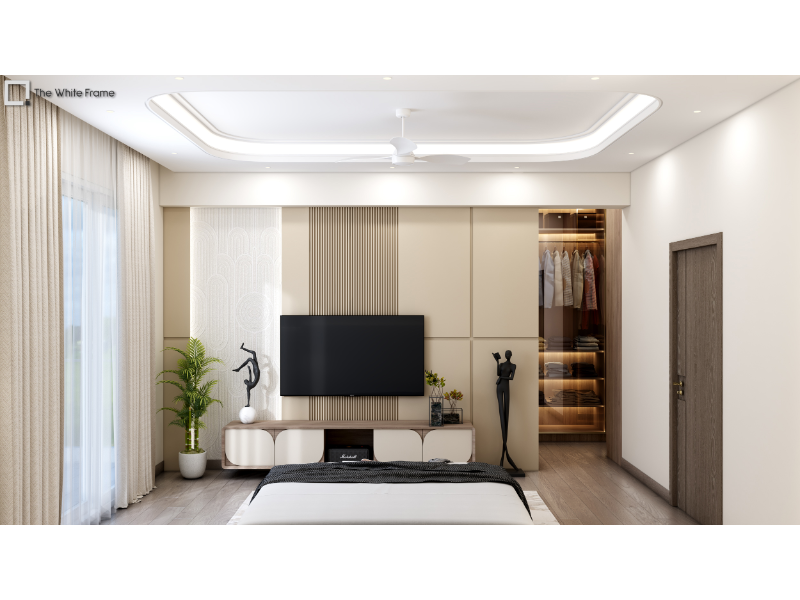
Material quality is the foundation of any great interior design. After all, What would a luxury living room be without rich, durable materials like Italian marble floors or premium teakwood finishes?
Great interior designers understand that using high-quality materials doesn’t just make a space look beautiful- they ensure it lasts. Whether it’s durable wood flooring or premium fabrics, choosing the right materials means your home will look amazing and stay that way for years to come.
In Gurgaon, where both luxury and practicality are highly valued, homeowners want materials that feel premium yet can withstand everyday use.
For instance, in a high-end kitchen, we often recommend stone countertops that don’t just add a touch of elegance but are also tough enough to handle everyday cooking. They’re heat-resistant and scratch-proof, which is perfect for a family that enjoys spending time in the kitchen, whether it’s whipping up quick meals or hosting dinner parties.
But quality isn’t just about luxury; it’s also about responsibility. More and more interior designers are now focusing on sustainable materials that are kind to the environment without compromising on style. Using eco-friendly fabrics or recycled wood for your interiors is trendy and it aligns with a greener lifestyle, something that many clients value deeply.
Customization: Designs that reflect You
Creating a home that truly reflects your personality starts with customization. Every homeowner is different, and the best interior designers in Gurgaon understand that design should be personal and unique to each client. A cookie-cutter approach simply won’t do. That’s why finding someone who can craft a space tailored to your lifestyle and preferences is so important.
Take a modular kitchen, for example. If you love to cook and entertain, you might need more storage for your gadgets or a spacious counter for meal prep and hosting friends. A great interior designer will pick up on these needs and design a kitchen that’s as practical as it is stylish. Or, if unwinding after a long day is your priority, you might prefer a bathroom with a soaking tub, warm lighting, and plush finishes, basically something that feels like a spa.
A key trait to look for is flexibility. Whether you envision a sleek, minimalist living room or a more traditional, cozy bedroom, the right interior designer can bring your ideas to life. They’ll help you select the perfect materials, finishes, and layouts that fit your lifestyle, ensuring the design looks great and goes seamlessly with your routine.
Versatility: Ability to Adapt to Different Styles and Spaces
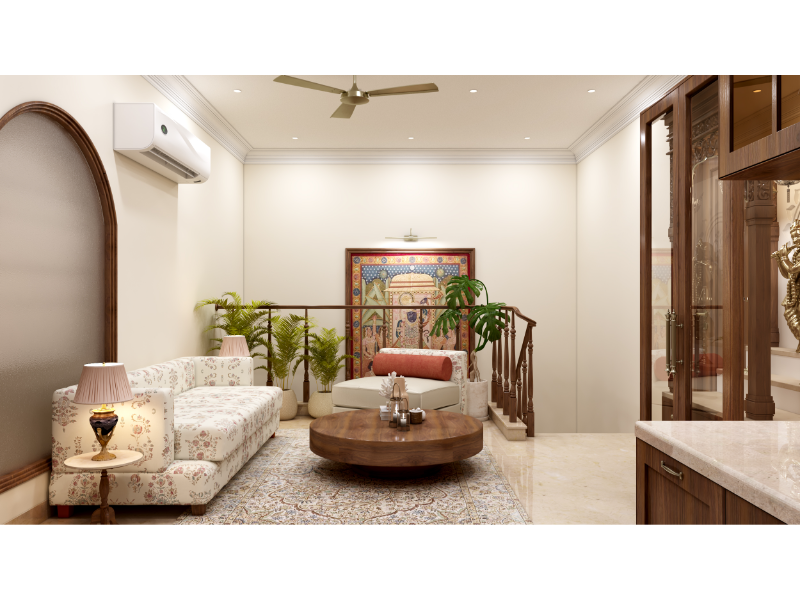
When selecting an interior designer, versatility is a quality you don’t want to overlook. The best interior designers in Gurgaon can effortlessly adapt to different styles, whether you’re dreaming of a sleek, modern home, a classic and elegant space, or a more luxurious and ornate design. Versatility shows a designer’s range and creativity, making them capable of bringing any vision to life.
For example, if you’re working with a spacious villa, you might want a grand, classical design that embraces luxury with rich textures and high-end materials. On the other hand, a compact apartment may call for a modern, minimalist approach that maximizes space while maintaining a chic, polished look. A skilled designer knows how to balance style with the practical needs of the space, ensuring that the result looks and feels right, no matter the size.
It’s also important to work with an interior designer who can confidently handle different spaces—from open-plan layouts to smaller, more confined areas. A versatile designer can adjust their approach to ensure that both large and small spaces are optimized, functional, and stylish. For instance, a villa might have room for expansive living areas, while an apartment might need more creative storage solutions and multipurpose furniture.
Client Testimonials: The True Measure of Success

Client testimonials offer valuable insights into how well an interior designer has performed on previous projects. Positive testimonials speak volumes about a designer’s ability to not only deliver a stunning design but also ensure that the entire process, from concept to execution, runs smoothly.
When looking for an interior designer in Gurgaon, check for reviews on platforms like Google Maps, Houzz, and social media pages. These reviews provide genuine insights from homeowners who’ve worked with the designer. Whether it is for exceptional communication, flawless project execution, or a finished space that exceeds expectations, testimonials offer a real glimpse into the designer’s professionalism and creativity.
For example, if you come across multiple reviews highlighting how the designer listened to the client’s vision and turned it into reality, it’s a good sign that they prioritize customer satisfaction. Or if a review mentions how the interior designer handled a tight deadline or unexpected challenges, it shows their ability to adapt and deliver under pressure.
Pricing Transparency and Value for Money
When looking for an interior designer in Gurgaon, it’s essential to pay attention to pricing transparency. A trustworthy designer will clearly outline their costs and provide a detailed breakdown. This way, you know exactly what you’re paying for, eliminating any surprises later on.
For example, if you’re planning a home renovation, a good designer will explain the costs for everything—from the materials to the labor—so you can see where your money is going.
When they provide clear pricing, it fosters trust and empowers you to proceed confidently with your project. Conversely, if they are unclear about costs or reluctant to provide details, it can raise some red flags. Value for money is just as crucial as pricing itself. It’s not simply about finding the lowest price; it’s about receiving quality that matches your investment.
A skilled interior designer will use top-notch materials and offer excellent service, making sure you get your money’s worth. For instance, some designers may advertise lower prices by using cheaper materials, but a true professional will focus on quality, ensuring that your space is not only beautiful but also durable and long-lasting.
Why The White Frame is the No.1 Choice for Interior Design in Gurgaon
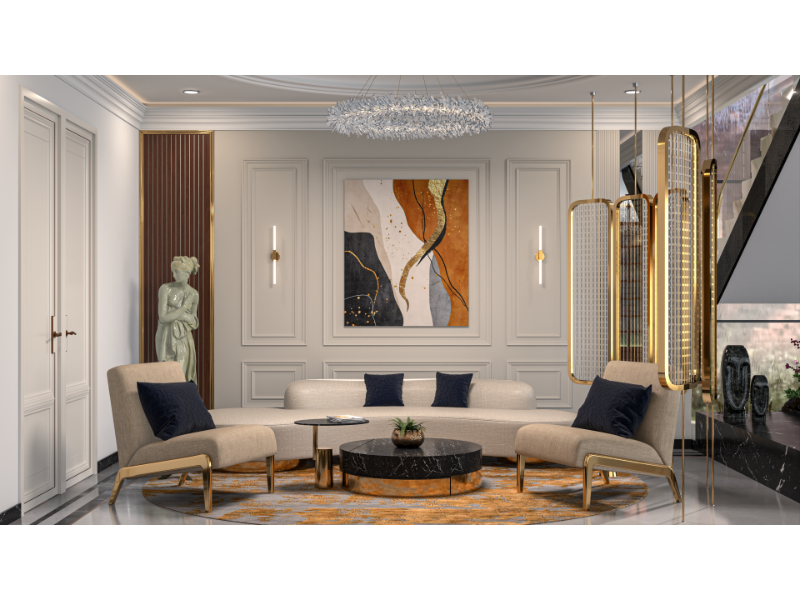
- Diverse Portfolio: At The White Frame, our portfolio is a testament to our expertise in various design styles and spaces. From opulent homes in Greater Kailash to stylish turnkey apartments in Noida, we showcase a wide range of projects that reflect our commitment to both aesthetics and functionality. Our experience ensures that we can create spaces that not only look beautiful but also serve the unique needs of our clients.
- Balancing Elegance and Practicality: We believe that great design is not just about making a space look good; it’s about making it work for you. Whether you’re looking for a contemporary apartment or a luxurious villa, our team excels at blending elegance with practicality. We pay attention to how you live and use your space, ensuring that every element enhances your daily life.
- Personalized Client Service: Our approach to client service sets us apart. We prioritize open communication and collaboration throughout the design process. From the initial concept to the final touches, we work closely with you to bring your dream space to life. This commitment to understanding your vision makes us a trusted name in interior design in Gurgaon.
- Customization at Its Best: We know that every client has unique tastes and preferences. That’s why we offer extensive customization options. Whether it’s designing a cozy home office or a lavish living room, we tailor every detail to fit your style. This level of personalization ensures that your space truly reflects who you are.
- Versatile Design Expertise: Our versatility is a hallmark of our interior design philosophy. Whether we’re crafting a grand villa or a compact apartment, our team adapts to any style and space. We take pride in ensuring that each project showcases the client’s personality and the space’s potential, making us one of the top interior designers in Gurgaon.
- Glowing Client Testimonials: Our clients speak volumes about our work. With numerous positive reviews on platforms like Google Maps, we’ve built a reputation for attention to detail and commitment to our clients’ visions. Homeowners across Gurgaon appreciate our dedication to creating spaces that exceed expectations.
- Transparent Pricing: Finally, we understand the importance of pricing transparency. Our clients value the clear breakdown of costs we provide, which helps them understand their investment. We believe in delivering exceptional value by using high-quality materials that are internationally certified and ensuring a design experience that goes beyond mere service. Choosing us means investing in a beautifully crafted space that truly reflects your style and needs.
In conclusion, when it comes to interior design in Gurgaon, THE WHITE FRAME stands out for its commitment to quality, personalized service, and the ability to create stunning spaces that enhance your lifestyle. Let us help you transform your vision into reality!
More Tips for fellow Interior Design Professionals here- Focus On Delivering Your Interior Design Projects Faster With These 5 Tips
Conclusion
The White Frame truly stands out as the premier choice for luxury interior design in Gurgaon, dedicated to creating sophisticated spaces that reflect your unique style. Our personalized approach ensures that every project is tailored to the preferences of homeowners in this vibrant city, blending elegance with functionality. With a focus on high-quality materials and meticulous craftsmanship, we transform your vision into reality, whether it’s a lavish villa or a stylish apartment. Trust us to elevate your space into a luxurious haven that truly reflects you.
Connect with us at @+91 9971168322 today!




